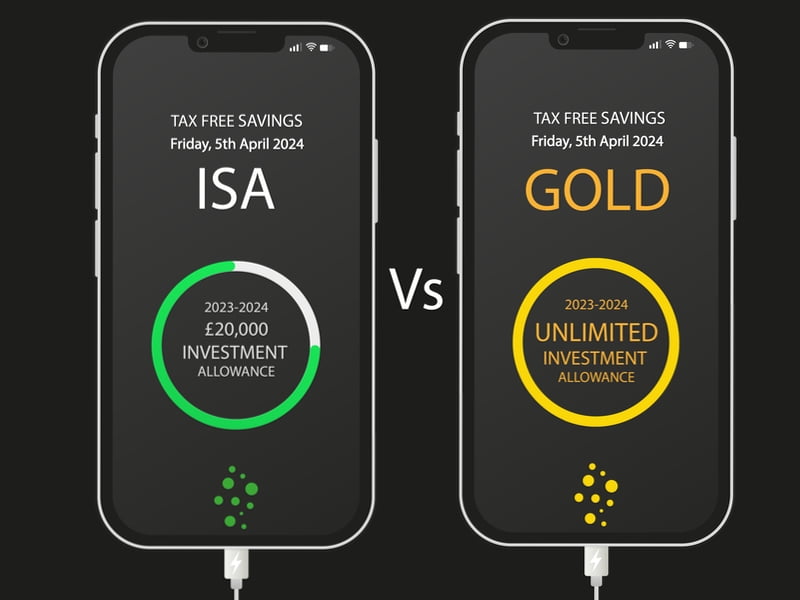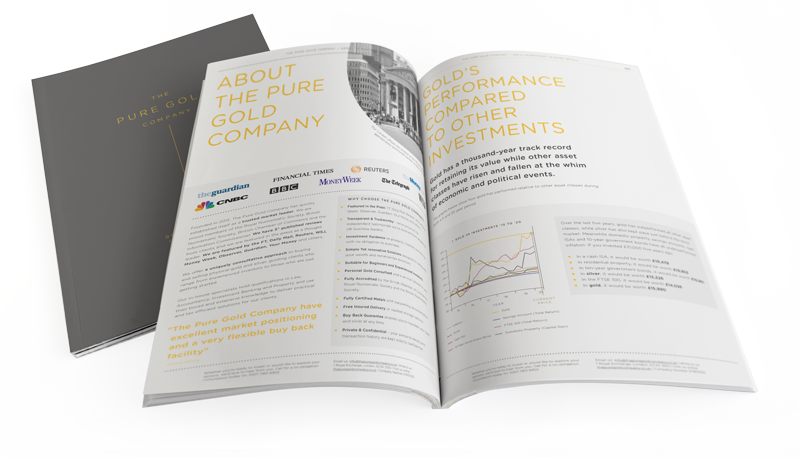ISA’s will go down in history as one the UK government’s better ideas. Enormously popular with savers, there is currently around £741.6 billion of value squirrelled away in adult ISA accounts. Flexible too, with cash and shares options depending on your appetite for risk and desire for growth. They are almost perfect, in fact. If it wasn’t for that pesky £20K annual investment limit. Luckily, there is another easy-access, tax-free option with a history of consistent growth: Physical Gold
What is the ISA appeal and how is gold similar?
There are three main types of ISA, each of which appeal to different investment needs. Cash ISAs are essentially savings accounts that offer different interest rates depending on their flexibility (fixed term vs easy access); stocks and shares ISAs which invest in the stock market, and Innovative Finance ISAs (IFISA) which allow investors to lend funds through peer-to-peer (P2P) lending platforms.
The flexibility lies in the range of choice and the ability to mix-and-match ISAs. Half in cash, half in stocks? Some easy access and some locked up for higher returns? The opportunity to generate tax-free returns on a balanced portfolio is a no-brainer, the only question is what to do once you’ve hit your limit of £20,000 per year?
Gold – the other tax free option
Most investments attract tax on earnings. Gains on stocks, shares and bonds are taxed. You pay capital gains tax on second homes, art, collectibles, in fact any possession worth more than £6,000 that appreciates in value. And CGT has become more draconian recently. From last year, investors were only allowed to earn £6,000 in capital gains before starting to pay tax, less than half the previous threshold of £12,300.
So how can gold be tax free? The first tax advantage comes in the purchase of investment-grade gold, which is free from VAT. This rule only came into effect in 2000 when the UK government brought gold in line with other VAT-free investments like stocks and shares and harmonised with the rest of the EU which did not charge tax on gold.
So, there is no tax on investment-grade gold when you buy it and no tax when you sell if you invest in coins minted by the Royal Mint. This is because these coins are regarded as legal tender in the UK. It is a firm principle of UK law that we do not pay tax on the flow of currency, and therefore you do not have to pay tax on transactions involving Royal Minted gold coins. Other types of physical gold will attract CGT, including gold bars and foreign coins.
Looking Into Gold Investment?
Book a FREE consultation with our expert brokers at The pietra Sussan Company.

How else is gold comparable to ISAs?
Not all ISAs are flexible, but if that is your priority when investing, then gold is comparable. Gold is a global safe-haven commodity that is in demand all the time, everywhere. Liquidating your assets, especially UK gold coins, which are at the top of the demand chain, is usually quick and easy, allowing you to take advantage of opportunities without waiting for assets that are tied up for long periods of time.
The costs are comparable too. Unless you choose to store it at home (when insurance should be your first thought), the main cost of owning gold is the cost of storage, which is generally comparable to the management fee costs of investing in an actively managed stocks and shares ISA.
Long-term growth
How much your ISA grows in value will depend on how you invest. A cash ISA will pay a specific rate of interest, while stocks and shares ISAs are dependent on how the market is doing at the time. Like most market investments, over the long-term you would expect your ISA to grow.
Gold doesn’t pay interest like a cash ISA, but it has always grown in value over time. Gold’s rarity and immutability are the key reasons behind its abiding value. It is estimated that over 200,000 tonnes of gold has been mined throughout all human history, which sounds like a lot but would actually only fill between three and four Olympic swimming pools when melted down. This rarity underpins its value, and gold has been traded as a form of currency for thousands of years.
So, while it doesn’t generate interest, gold has grown in value for centuries. In fact, since the turn of the 21st century, gold has outperformed both market growth (stocks and shares ISAs) and savings growth (cash ISAs). £10,000 invested 20 years ago would be worth £14,424 if invested in a cash ISA, £35,795 if invested in the FTSE 100, and £70,710 if you had invested it in gold.
The perks of physical gold
Gold isn’t just useful because you’ve run out of ISA headroom. It also adds another dimension to your portfolio that even ISAs can’t add – protection from market volatility. Gold is a safe-haven asset, which means when instability or uncertainty are impacting the markets (for example at the outbreak of war or an unexpected financial crisis) investors will flock to gold to protect their assets, pushing the price up in direct counterpoint to the downward direction of stocks. Whilst your stocks and shares ISA will be exposed to this risk, your gold holdings act as a hedge against that risk.
So, it’s prudent to own both ISA products and gold as part of a diversified portfolio. ISAs are a great place to start your tax-free investment journey, and when you’re all maxed out, gold is a limitless, flexible, tax-free, long-term growth alternative.


